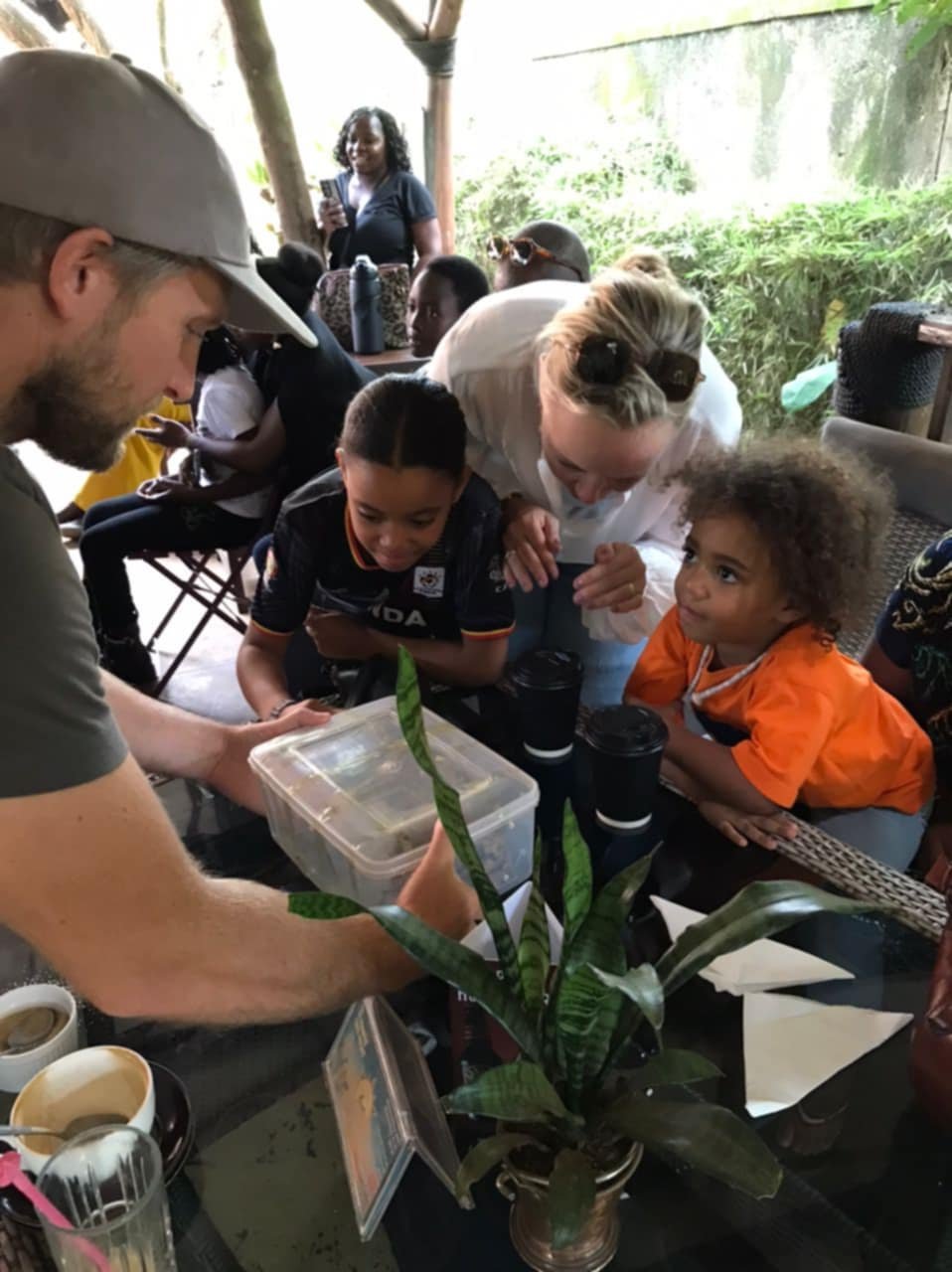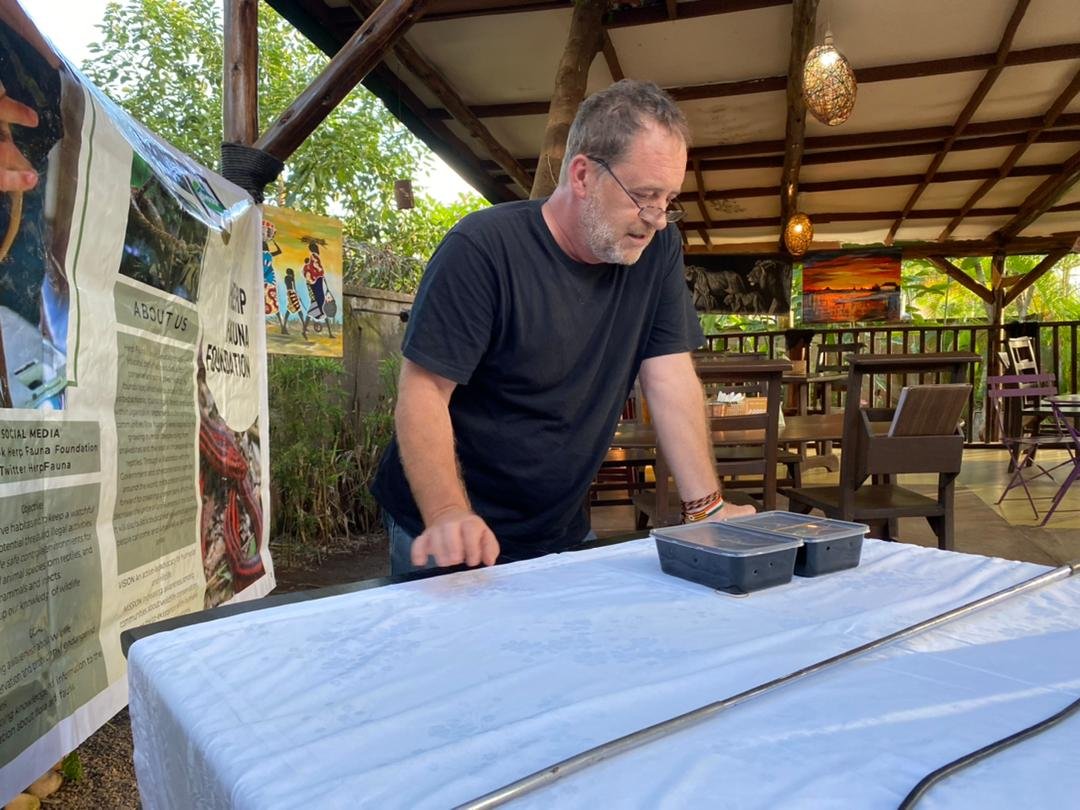
A Snake Awareness Evening Success!
Thank you to, Dancing Cup Cafe and Restaurant for hosting this event!


With a mix of recreation, environmental conservation can be fun!
Dancing Cup and Herp fauna are combining conservation and fun! Read more here!

Mabira Forest Herping Adventure!
Herping Trip in Mabira Forest!
Hear about our two day herping trip to Mabira Forest, Uganda, where we tick off a few ‘lifers’ from my herping list!

Culture and Ecological : Lesson from Uganda
Snakebite envenomation remains one of the most neglected tropical health threats, claiming over 100,000 lives annually worldwide, with sub-Saharan Africa, including Uganda, among the most affected regions. In rural Uganda, where many communities live in close proximity to nature, the management of snakebites transcends medicine—it is woven into the cultural fabric, traditional ecological knowledge (TEK), and levels of community engagement. These elements can either help mitigate snakebite risk or, paradoxically, increase it.
In many Ugandan communities, snakes are viewed through deeply cultural lenses. Some are feared and believed to be spiritual messengers, while others are considered omens or symbols of ancestral spirits. These beliefs can shape behavior in powerful ways.
Positive cultural influence is seen in areas where taboos prevent the killing of snakes or where traditional stories teach children to avoid snake-infested areas. In eastern Uganda, for example, elders pass down folktales warning children against entering certain bushes or water points known to harbor dangerous reptiles.
However, cultural misconceptions can also cause harm. In parts of northern and western Uganda, a snakebite may be interpreted as the result of witchcraft or a curse. Victims may first seek help from traditional healers, delaying access to effective antivenom treatment. In some cases, harmful traditional first-aid practices—such as making incisions at the bite site or using 'snake stones'—worsen patient outcomes.
Traditional ecological knowledge, gained through generations of interaction with local ecosystems, remains an underappreciated asset in snakebite prevention. Ugandan farmers and herders often know which seasons snakes emerge, where they dwell, and how to avoid them. In the Karamoja region, herders avoid sleeping near rocky crevices during the dry season, knowing these are popular shelters for venomous vipers.
In the central and western parts of Uganda, some communities use natural repellents—such as planting lemongrass or maintaining clean homesteads—to reduce rodent populations and deter snakes. These practices reflect an intricate understanding of human-wildlife dynamics.
However, challenges persist. Inaccurate identification of snake species or reliance on untested herbal antidotes can be dangerous. The need to validate and integrate TEK with scientific knowledge is increasingly urgent, especially as habitat loss and climate change shift snake behavior.
Where culture and TEK are combined with structured community engagement, snakebite outcomes drastically improve. NGOs and conservation organizations working in Uganda have found success by involving local leaders, teachers, and traditional healers in snakebite education programs. Using local languages, visual demonstrations, and community theatre, such programs demystify snake behavior and teach evidence-based first aid.
For instance, a community-based snakebite project in the Albertine Rift region trained youth volunteers as 'snake safety champions,' equipped villages with torches and boots, and created locally made posters about venomous snake identification. As a result, both snakebite incidents and fatalities declined significantly over two years.
On the other hand, lack of engagement—particularly in areas where healthcare access is low—leads to misinformation, fear-driven reactions (like killing every snake on sight), and delays in seeking treatment. Where communities are not consulted in development projects, such as road or plantation expansion, the displacement of snake habitats often leads to increased human-snake conflict.
Mitigating snakebite risk in Uganda—and across snakebite-prone countries—requires a holistic approach that respects cultural beliefs, uplifts traditional knowledge, and fosters inclusive engagement. Integrating these elements into public health planning, conservation policy, and education systems is key.
Uganda's experience demonstrates that culture and traditional knowledge are not barriers, but potential bridges—if meaningfully connected with modern science and community action. As the WHO calls for greater investment in snakebite prevention and care under its NTD Roadmap 2030, the time is ripe to bring culture and community to the center of the conversation.

